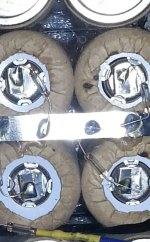Hi, I'm looking into building my own 18650 battery pack. Can anyone tell is it important to have fusible links to every cell. I have noticed most of the people on here don't bother with it. So what are the possible risks in not using fusible links? I have noticed em3ev now use fusible links and have bought a pack from them before, there batteries seem to be of a very high standard. Are there any other e bike battery manufacturers building packs in the same way? I am also wondering where the best place to buy 18650s would be I would like to get Samsung 30qs. I have noticed a few people buying from Nkon are they any good? What would be a good spot welder to buy and where? Also nickel strip and cell holders. If anyone could give me some advice on a firs timer building a pack it would be greatly appreciated!
Thanks guys!

Thanks guys!


